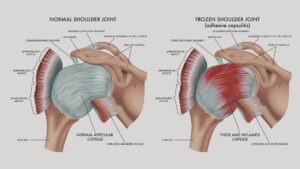

Subtalar Joint… the body’s steering wheel
Perfect foot structure isn’t needed to walk comfortably, yet our clients do require good functional movement in several key joints to lessen wear and tear

Perfect foot structure isn’t needed to walk comfortably, yet our clients do require good functional movement in several key joints to lessen wear and tear

Turning on weak muscles When our bodies are chronically injured or declining, one way of protecting ourselves is to tighten our muscular systems. Prolonged tightening

Sacrificing complexity of movement for stability Working in a technologically driven society has caused an explosive and expensive increase in work-related costs, with injuries occurring

The moment the client is touched, brainwaves begin to change — for both client and therapist. (Learn more about cueing your clients into a calming brainwave state for positive outcomes)

Artists, bodyworkers, computer programmers, and writers are among those who suffer from overuse syndromes such as carpal tunnel…

The AC joint sits on the point of the shoulder lateral to the sternoclavicular (SC) and proximal to the glenohumeral (GH) joint. Regrettably, this oft-overlooked bony articulation receives little respect from most manual therapists. Both the AC and SC joints play vital roles in the biomechanics of throwing and other upper-limb activities.

From Essential MAT Assessments course One of the primary functions of the tib-fib synovial joint is to help dissipate lower leg torsional stresses during

The occipitoatlantal (O-A) joint is the uppermost weight-bearing synovial joint in the body and is the final junction for adapting to asymmetry or dysfunction from below. Mechanically, the head teeters on the two…

Efficiency of movement, pain reduction, and improved function are the desired outcomes of most types of manual and exercise-based therapies, yet we’ve all seen how tension, trauma, and even overly aggressive bodywork can…

Homolateral gait, righting reflexes, and neck strain Before an infant learns to crawl, he moves using homolateral movements, which involve one side of the body,
Free subscription to the Technique Tuesday newsletter. Sign up to receive an in-depth article and technique video in your inbox every Tuesday.
